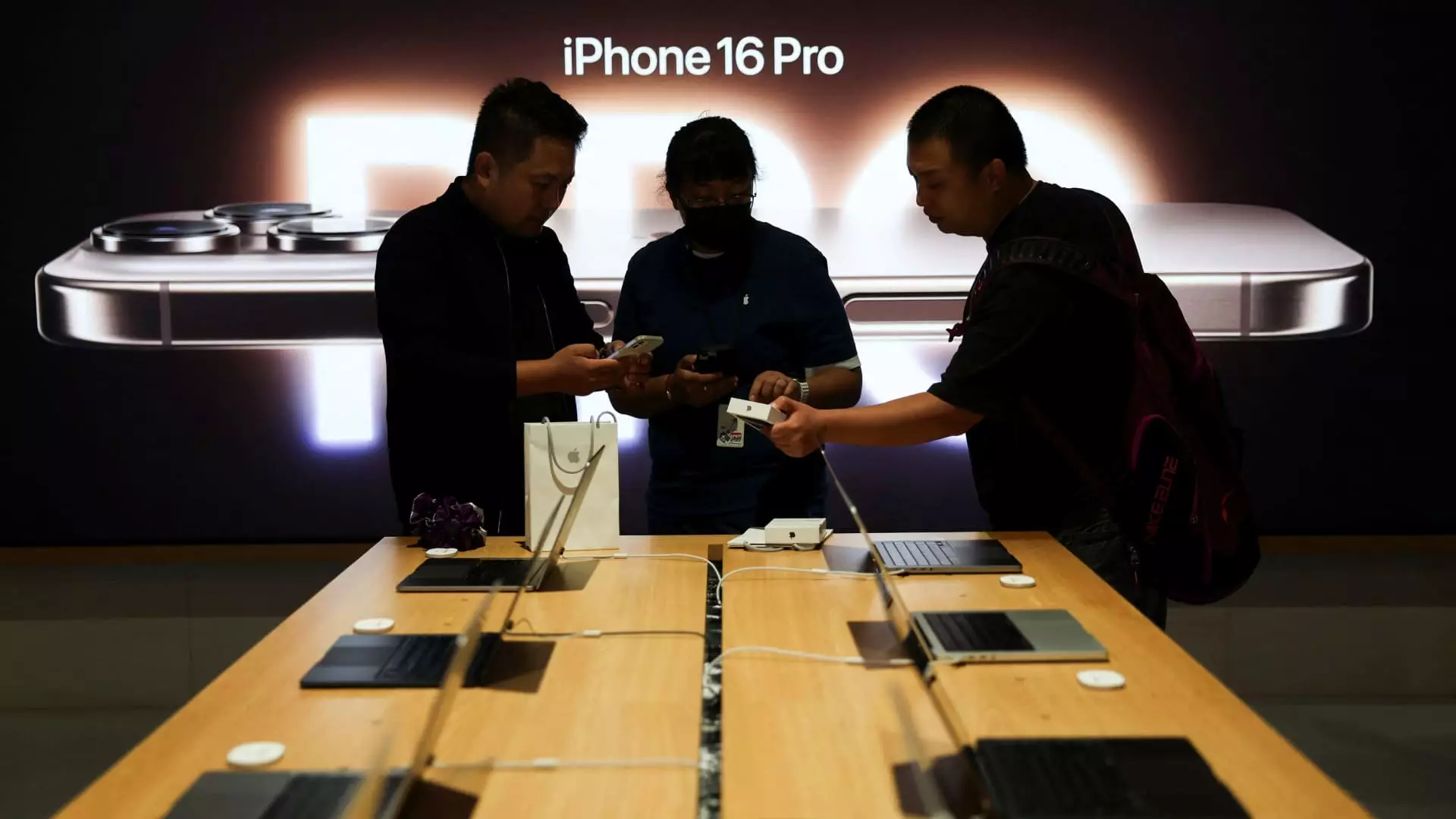In the ever-evolving landscape of technology stocks, Apple Inc. finds itself at a critical juncture as analysts parse its recent quarterly report. Despite a mix of outcomes, the sentiment on Wall Street remains relatively strong, reflecting a blend of cautious optimism and significant concerns about future performance. This article explores the intricate analysis of Apple’s latest quarterly performance, the resilience of its product lineup, and the implications of its sales forecasts moving forward.
Quarterly Results: A Closer Examination
In its latest earnings report, Apple showed a commendable performance by exceeding both revenue and profit expectations. The company reported a 6% increase in net sales year-over-year, highlighting a robust demand for its flagship product—the iPhone, which contributes nearly half of the company’s total income. Tim Cook, Apple’s CEO, articulated a positive narrative during a CNBC interview, noting that sales figures for the latest iPhone model were outperforming those of the previous year’s models at similar points. This point of focus draws attention to the sustained allure of the Apple brand and its capacity to generate significant revenue streams.
However, optimism was tempered by the company’s guidance for the upcoming December quarter, which pointed to a “low to mid single-digit” growth forecast. Such projections fell short of Wall Street’s more optimistic anticipations, leading to a brief decline in Apple’s stock price. The juxtaposition of strong current sales against a more subdued future outlook serves as a reminder of the cyclical pressures that tech companies often face, particularly in a rapidly changing marketplace.
In the wake of Apple’s quarterly report, various financial institutions have offered differing forecasts and analyses. For instance, Goldman Sachs has reiterated its “buy” rating with a price target of $286, suggesting a substantial potential upside of around 27%. Analyst Michael Ng attributes this confidence to the broader strength of the Apple ecosystem, arguing that the long-term durability of Apple’s services and the expansion of its installed user base will outlast any temporary downturn in product revenue.
Contrastingly, UBS has cautioned against unchecked optimism regarding iPhone demand, maintaining a “neutral” estimate with a target price of $236—indicating a modest potential upside of approximately 4%. Analyst David Vogt emphasized that, while potential improvements in demand may occur, particularly in early 2025, current metrics do not reflect a significant likely uptick. His concerns lean toward lukewarm consumer response to the newer on-device AI features, suggesting that these innovations have yet to resonate strongly with end users.
The conflicting perspectives among analysts highlight the complexity of predicting future performance in the technology sector. Morgan Stanley remains steadfast, grading Apple with an “overweight” rating. Analyst Erik Woodring sees Apple’s current position as a prelude to what could be the largest upgrade cycle in the company’s history, propelled by innovative new features and enhanced user acquisition strategies. This conviction points to a potential shift in dynamics as the company navigates what could be transformative for its product line in fiscal years 2025 and 2026.
Meanwhile, Bank of America shares a similar positive outlook, underscoring the strategic rollout of Apple Intelligence, which offers a different approach to product refresh cycles. Wamsi Mohan hinted that gradual feature increments over time may provide a more sustainable model, contrasting with traditional product launch strategies.
As Apple continues to promote its latest offerings and innovation strategies, the company’s ability to manage market expectations and consumer demand will be pivotal. The challenges of a potential slowdown juxtaposed with the strengths of an established brand and an expansive service ecosystem create a complex narrative. While the current quarterly performance reveals a company that remains a formidable player in the tech industry, the real test will lie in how effectively Apple can balance growth with the inherent volatility of the tech market. The coming months will be integral to determining if the trends observed will uphold their momentum or if they will evolve into a more subdued reality for the tech giant.

